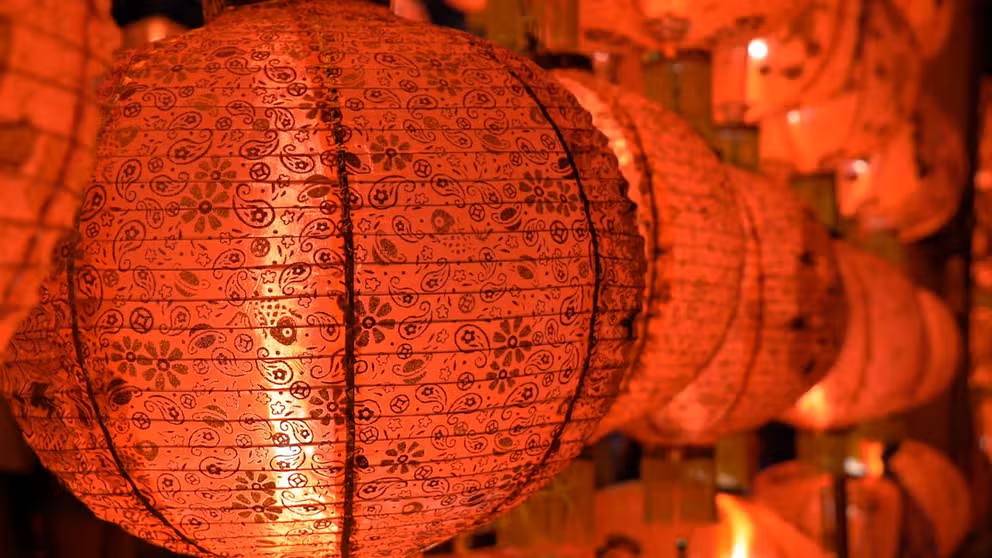How Lunar New Year was inspired by the moon and a mythical beast
Lunar New Year 2023 begins on Jan. 22. Marking the Year of the Rabbit, Lunar New Year kicks off a two-week celebration for many Asian Americans and their families.
Lunar New Year
"Lunar New Year is Christmas, Thanksgiving and more combined into one giant celebration."
Lunar New Year is Christmas, Thanksgiving and more combined into one giant celebration, according to Wellington Z. Chen, head of the New York City Chinatown Business Improvement District and Chinatown Partnership.
"It means crossing the threshold – the symbolic gesture of crossing into a new beginning, that you made it through the year," Chen said. "In a football analogy, you made it through that touchdown line."
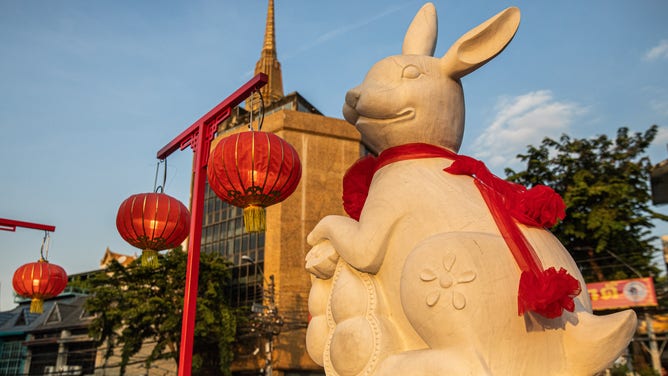
Year of the rabbit decorations are seen throughout Chinatown on the eve of Lunar New Year on January 20, 2023 in Bangkok, Thailand.
(Lauren DeCicca / Getty Images)
According to David Uy, the executive director of the Chinese American Museum in Washington, D.C., Lunar New Year is similar to the Western notion of New Year's Day on the western calendar.
"People write their New Year's resolutions. They reset themselves. They put the past behind them, and then they look in a positive way looking forward," Uy said.
By the power of the moon
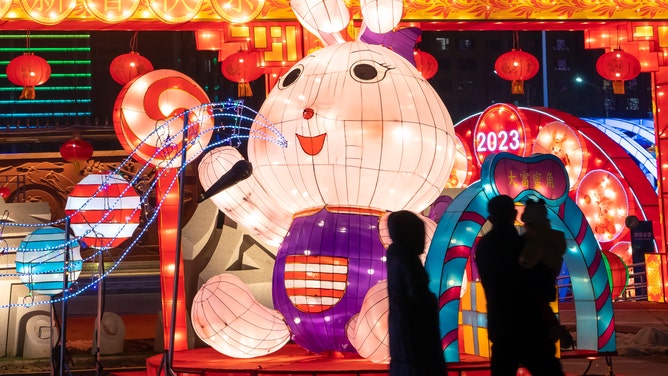
People walk by an illuminated rabbit lantern during a lantern show at a tourist attraction ahead of the Chinese New Year, the Year of the Rabbit, on January 19, 2023 in Yuncheng, Shanxi Province of China.
(VCG / Getty Images)
Every Lunar New Year also holds a special meaning based on a figure from the Chinese zodiac. Uy said there are twelve zodiac signs: the rat, ox, tiger, rabbit, dragon, snake, horse, goat, monkey, rooster, dog and pig. The zodiac sign for 2023 is the rabbit.
The Lunar New Year celebration lasts for about two weeks. Its exact dates vary from year to year because, as its name suggests, Lunar New Year is based on the lunar calendar, rather than the solar calendar.
HOW THE MOON AND SUN SHAPED OUR CALENDARS
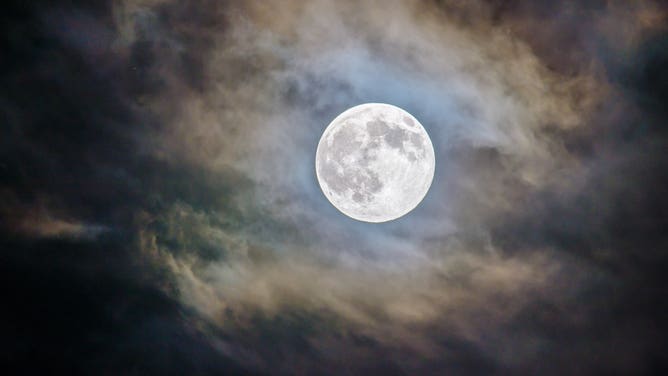
(Ganapathy Kumar / Unsplash)
According to Encyclopedia Britannica, Lunar New Year begins with the first new moon of the lunar calendar and ends 15 days later on the first full moon of that calendar.
This year, Lunar New Year begins on Sunday, Jan. 22.
Beast of the mythical wild
The celebration of Lunar New Year goes back thousands of years, with its origin story rooted in a legend about a certain beast.
"The mythology is that there is a beast called Nian that would devour the villagers," Chen said. "And so, you need to scare him off."
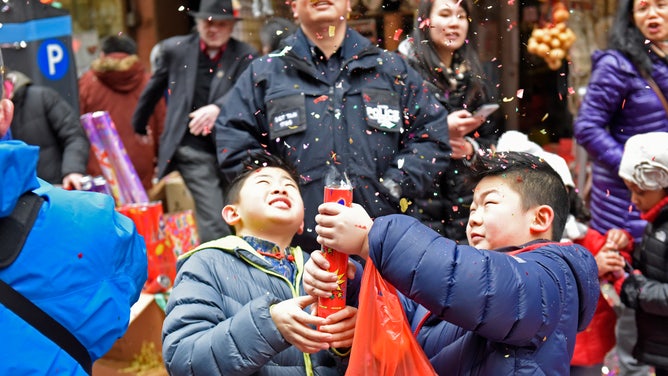
Some Lunar New Year celebrations, such as firecrackers and loud noises, are tied to a legend about a monster.
(Andy Katz / Pacific Press / LightRocket / Getty Images)
"There was some hero of the time that scared away the Nian with bright red decorations and fireworks," Uy said. "And so, each year, everyone emulates those."
HOW AN AUTUMN FESTIVAL WAS INSPIRED BY A LOVE STORY
Lunar New Year celebrations are often filled with the color red, which has always been a traditional symbol of power and strength, according to Uy.
For example, red lanterns may be hung, and red envelopes filled with cash are given to children. Firecrackers — red or not — may be set off, as well.
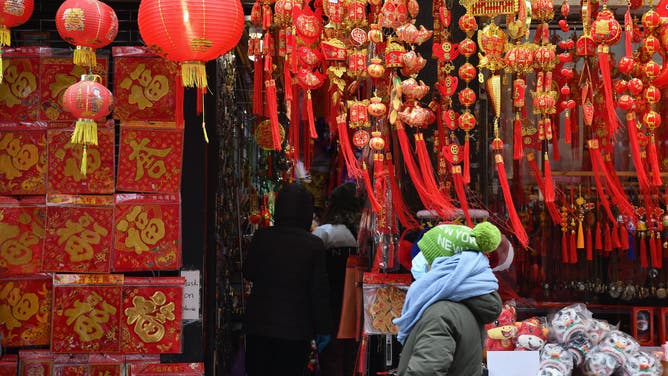
Red lanterns and other decorations on display at a Lunar New Year celebration in Chinatown in NYC.
(Angela Weiss / AFP / Getty Images)
Food also plays a major role. According to Chen, families may serve noodles, which represent longevity, and fish, which represent surplus.
"The other thing is about fortune, and so, in many regions, dumpling is a must," Chen said. "Dumpling is shaped like the ancient monetary currency, the gold ingot."
"Eating dumpling, as well as many kinds of different food, have symbolic phonetic meaning in Chinese or in whatever languages spoken," Chen added.
It’s all about family
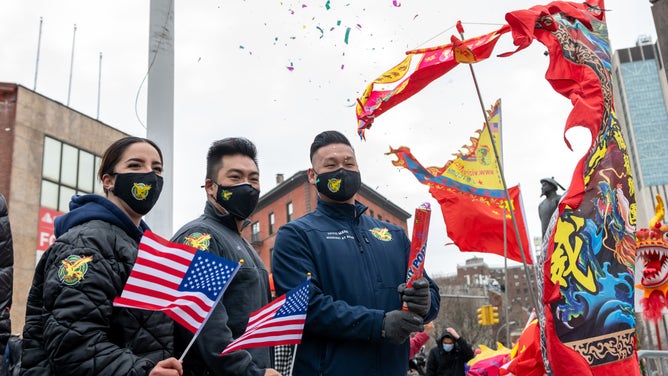
Members of the New York City Fire Department celebrate Lunar New Year in NYC's Chinatown.
(Alexi Rosenfeld / Getty Images)
Food, firecrackers and fierce monsters aside, a larger theme connects all Lunar New Year celebrations.
"It still always comes back to celebrating family, bringing family together and wishing everyone good fortune and happiness and prosperity," Uy said.
No matter where people are — in China, Korea, Japan, Vietnam, Philippines, the U.S., and other countries with members of the Asian diaspora — many may travel long distances to celebrate Lunar New Year together.
According to Chen, in China lone, the New Year is a time of the largest migration of the year, as millions travel by rail from urban coastal areas to see loved ones in rural areas back home.
"I truly believe Lunar New Year is about coming together collectively — being kind to one another, appreciating what we have when we are living in heaven, in reality," Chen said.
